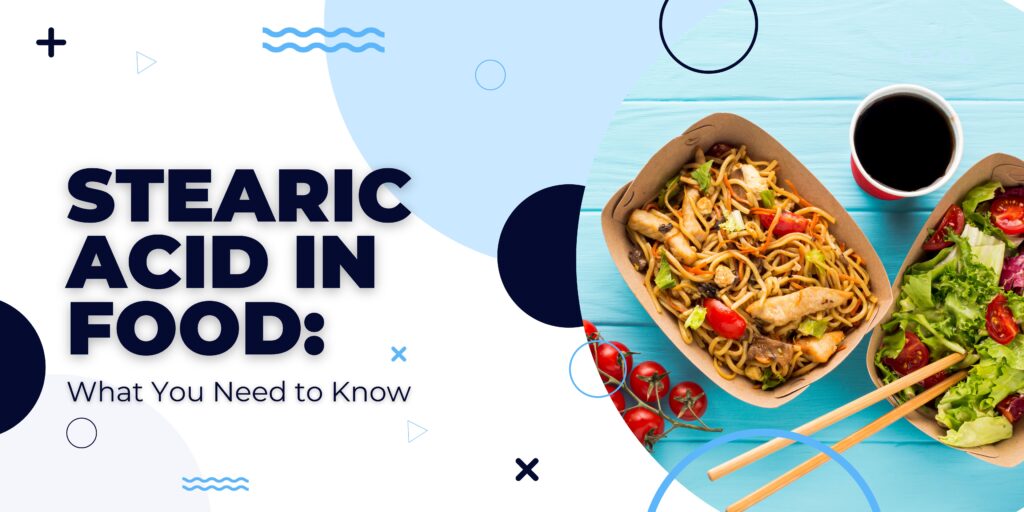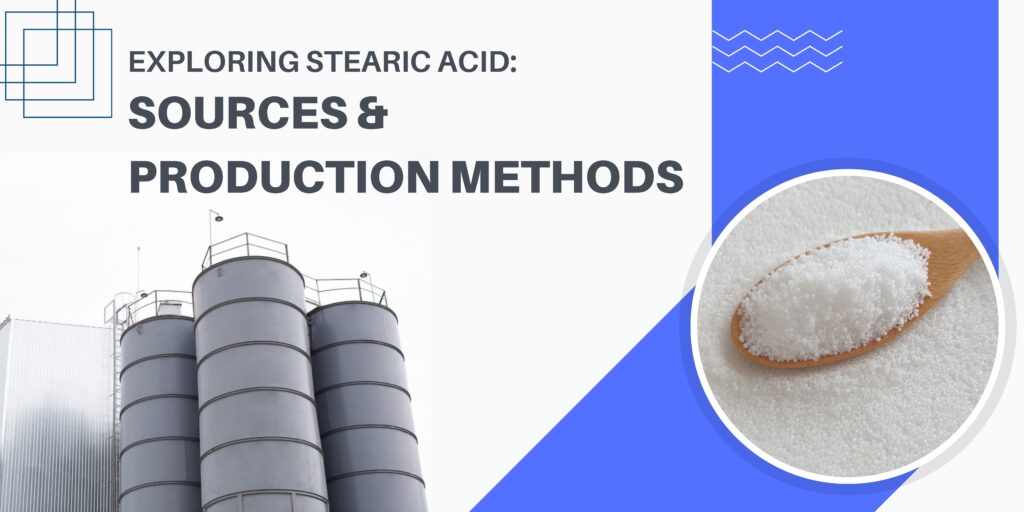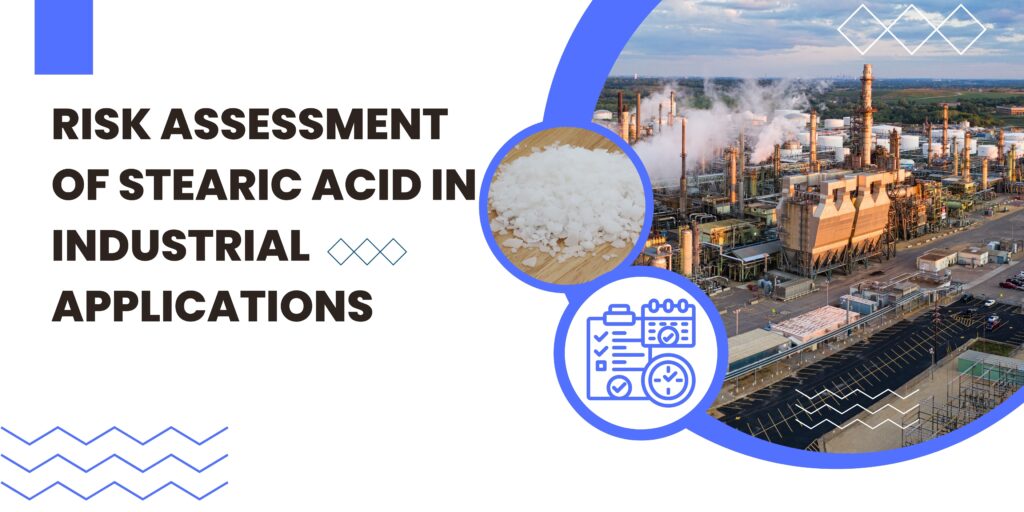
A key ingredient of the dietary fats present in many foods is the long-chain saturated fatty acid stearic acid. Due to its distinctive metabolic characteristics, particularly its lack of impact on low-density lipoprotein (LDL) cholesterol levels, it is characterized as a neutral saturated fat. Stearic acid, which is sometimes disregarded, has a number of advantages when consumed as part of a healthy diet. This article goes into the world of stearic acid, examining its composition, origins, health implications, and importance as a food-grade stearic acid.
Stearic acid, chemically known as octadecanoic acid, is a saturated fatty acid with a molecular formula of C18H36O2. Structurally, it consists of a long hydrocarbon chain comprising 18 carbon atoms bonded to a carboxyl group. This fatty acid is solid at room temperature and presents as a waxy, odorless, and tasteless substance.
Sources of Stearic Acid
Stearic acid is naturally present in a variety of foods, both from animal and plant origins. Common sources of stearic acid include:
- Meat Products: Beef, pork, and poultry are rich sources of stearic acid. It is primarily found in the fat content of these meats.
- Cocoa Butter: Cocoa beans, used to make chocolate and cocoa butter, contain a significant amount of stearic acid.
- Vegetable Oils: Certain vegetable oils, including shea butter, palm oil, and cottonseed oil, are known to contain stearic acid.
- Dairy Products: Although in smaller amounts, dairy products like milk and cheese also contain stearic acid.
- Nuts: Some nuts, such as macadamia nuts, contain stearic acid as a component of their fat content.
Properties of Stearic Acid
Physical Properties
- State at Room Temperature: Stearic acid is a solid, waxy substance at room temperature, imparting a characteristic firm texture to foods.
- Melting Point: It has a relatively high melting point, typically around 69 to 71 degrees Celsius (156 to 160 degrees Fahrenheit).
- Odor and Taste: Stearic acid is odorless and tasteless, ensuring it doesn’t alter the flavor of the foods it is incorporated into.
Chemical Properties
- Solubility: Stearic acid is insoluble in water but soluble in organic solvents like ether, acetone, and chloroform.
- Acidic Nature: It is a weak acid and forms salts (stearates) with bases.
- Hydrophobicity: Being a saturated fatty acid, stearic acid is highly hydrophobic, repelling water molecules.
Composition of Food-Grade Stearic Acid
Chemical Structure
Stearic acid is a long-chain fatty acid, composed of 18 carbon atoms (C18) with a saturated carbon backbone.
Fatty Acid Profile
- Saturated Fatty Acid: Stearic acid is a saturated fat, which means that it doesn’t have any double bonds between its carbon atoms, giving it a stable structure and a solid state at normal temperature.
- Specific Position in Triglycerides: Stearic acid frequently resides in the 1 and 3 positions of triglycerides, which contributes to their structural stability.
Isomeric Form
Stearic acid exists in two primary isomeric forms: 1-stearic acid and 2-stearic acid. These isomers have slightly different physical properties and behaviors.
Food-Grade Stearic Acid: Its Importance and Uses
Food-grade stearic acid is a purified and refined form of stearic acid that adheres to the highest standards of purity and safety for human consumption. It is a crucial ingredient in the food industry, utilized for various purposes:
Emulsifying Agent
Stearic acid acts as an emulsifying agent, facilitating the mixing of fats with water-based substances. This property makes it vital for the production of salad dressings, sauces, and spreads.
Texture Enhancer
Food-grade stearic acid contributes to the desired texture and consistency in numerous food products, including confections like chocolates and candy bars. It provides a smooth and creamy mouthfeel.
Stabilizing Agent
In processed foods, stearic acid helps stabilize mixtures, preventing separation or clumping of ingredients. It is commonly used in margarine and other spreads.
Release Agent
Stearic acid serves as a release agent in food processing by preventing the sticking of food to cooking surfaces during baking and frying.
Flavor Enhancer
Stearic acid can enhance the flavor of certain foods, especially in chocolate-based products, by imparting a rich and smooth taste.
Other Food-Grade Chemicals
Tradeasia International Pte Ltd offers a wide range of food-grade chemicals with different functions such as leavening agents, emulsifiers, preservatives, sweeteners, and many more.
ExploreRole of Food-Grade Stearic Acid in a Balanced Diet
Energy Source
Food-grade stearic acid serves as a concentrated energy source due to its calorie-dense nature, providing fuel for bodily functions and activities.
Neutral Impact on Cholesterol
As a saturated fat, stearic acid does not raise LDL cholesterol levels, making it a better option compared to other saturated fats for cardiovascular health.
Structural Component
Stearic acid is a vital component of cellular membranes and contributes to the structure and stability of various tissues in the human body.
Texture and Mouthfeel Enhancement
When incorporated into foods, stearic acid contributes to a smooth and creamy texture, enhancing the overall mouthfeel of products like chocolates and spreads.
Conclusion
Any food containing stearic acid, whether it be in its food-grade form or naturally occurring, will contain it. It’s a useful complement to a balanced diet due to its special qualities and unfavorable effect on cholesterol levels. The importance of stearic acid in the food business is highlighted by the fact that it is a food-grade substance that is essential for improving the texture, stability, and flavor of food products. We may make educated dietary decisions and recognize stearic acid’s good impact on food quality and human health by understanding its various functions and advantages.




